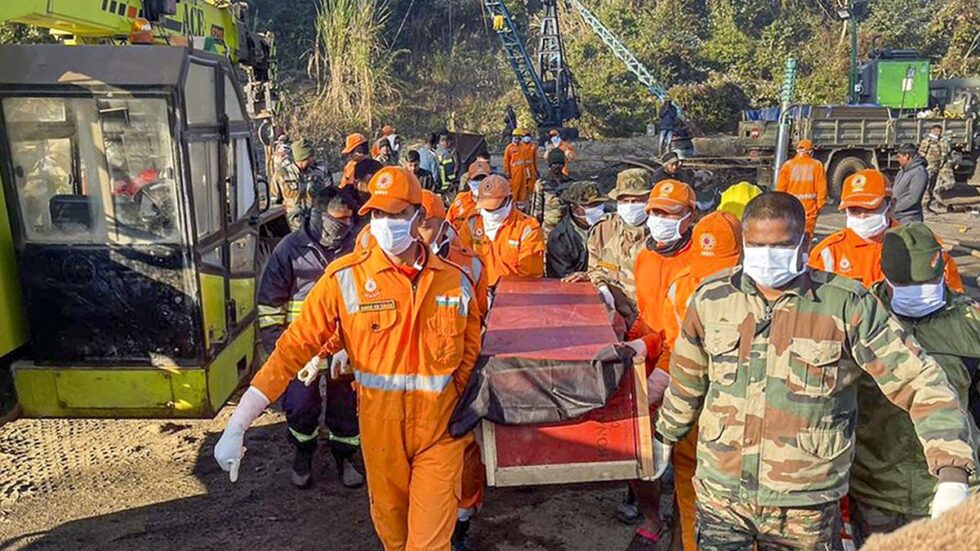
An oral question from the Supreme Court to the Union government continues to remain unanswered even as rescue workers recover bodies of workers who died trapped in a flooded rat-hole coal mine at Dima Hasao district in Assam.
On January 11, 2019, nearly six years ago, the top court had asked whether rat-hole mines could possibly operate in the northeast hills without the “connivance” of officials. The Bench was at the time examining the rescue of 15 miners trapped in a rat-hole mine deep inside the East Jaintia Hills on December 13, 2018.
“Lives are lost due to illegal mining. What about the officials who allowed this to happen? It could not have been done without the connivance of the officials…” Justice A.K. Sikri (now retired) had asked the Union and Meghalaya governments in a hearing in January 2019.
The incident at East Jaintia Hills occurred four years after the National Green Tribunal (NGT), in April 2014, had banned rat-hole mining and illegal transport of coal “forthwith” in Meghalaya.
The ban, seconded by the Supreme Court, was triggered by the trapping of 30 coal labourers inside a rat-hole mine at Nongalbibra in the South Garo Hill district of Meghalaya in July 2012. Fifteen of them died in the mine.
The apex court had at the time said it would look into the aspect of how rat-hole mining continued to survive such a comprehensive ban.
A report submitted by a monitoring committee set up by the NGT under the chairmanship of a former Gauhati High Court judge, Justice B.P. Katakey, had said that, despite the ban, the demand for a huge quantity of illegally mined coal from cement manufacturing and thermal power plants in the northeast had sustained and supported rat-hole coal mining.
In its July 2019 judgment on an appeal filed by the State of Meghalaya against the ban, the Supreme Court agreed with the NGT’s conclusion that “illegal and unscientific mining neither can be held to be in the interest of people of the area, the people working in the mines nor in the interest of environment”.
The apex court had held that although private owners of the land had rights in the minerals, no unregulated and unscientific mining could be carried out. It had said the mining policy of the State had to be consistent with and regulated by the provisions of laws, including the Mines and Minerals (Development and Regulation) Act of 1957, the Environment (Protection) Act of 1986, and the Mineral Concession Rules of 1960. Even mining by the landowner was required to be regulated under the statutory scheme.
Among other corrective measures, the court had also upheld an NGT direction to Meghalaya to deposit ₹100 crores, paid out of the Meghalaya Environment Protection and Restoration Fund to the Central Pollution Control Board for restoration of the environment.
The apex court judgment had referred to the view that rat-hole mining was a “primitive” method.
“In this method the land is first cleared by cutting and removing the ground vegetation and then digging pits ranging from five to 100 m2 into the ground to reach the coal seam. Thereafter, tunnels are made into the seam sideways to extract the coal which is brought into the pit by using a conical basket or a wheelbarrow manually. Coal seams are reached by excavating the side edge of the hill slopes and then coal is extracted through a horizontal tunnel. The coal from the tunnel or pit is taken out and dumped on nearby un-mined area, from where it is carried to the larger dumping places near highways for its trade and transportation,” the judgment had quoted.






